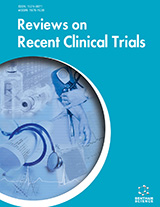Abstract
Despite relative stable and adequately controlled background pain, Breakthrough Cancer Pain (BTcP) is a transient exarcebation of pain that occurs either spontaneously or in relation to a specific predictable trigger. It is characterized by a typical temporal pattern which includes a short onset (generally a few minutes) and a short duration (30-90 minutes). It has a strong influence on quality of life (QoL), including detrimental effects on activities of daily living, sleep, social relationships and enjoyment of life. Therefore, BTcP represents an important clinical challenge in the care of patients with cancer. Transmucosal fentanyl, a rapid onset opioid (ROO), is indicated for the treatment of BTcP in patients who are already receiving and are tolerant to opioid therapy for underlying, persistent pain. In order to identify published studies on BTcP and ROOs a Medline search was carried out. The characteristics of the various formulations of transmucosal fentanyl used for BTcP and clinical data published in literature will be described in this review.
Keywords: Breakthrough cancer pain, fentanyl, transmucosal delivery, rapid onset opioid, hydromorphon, subcutaneous route, transmucosal, bioavailability, morphine, nasal
Reviews on Recent Clinical Trials
Title:Fentanyl for Breakthrough Cancer Pain: Where are We?
Volume: 8 Issue: 1
Author(s): Fausto Meriggi and Alberto Zaniboni
Affiliation:
Keywords: Breakthrough cancer pain, fentanyl, transmucosal delivery, rapid onset opioid, hydromorphon, subcutaneous route, transmucosal, bioavailability, morphine, nasal
Abstract: Despite relative stable and adequately controlled background pain, Breakthrough Cancer Pain (BTcP) is a transient exarcebation of pain that occurs either spontaneously or in relation to a specific predictable trigger. It is characterized by a typical temporal pattern which includes a short onset (generally a few minutes) and a short duration (30-90 minutes). It has a strong influence on quality of life (QoL), including detrimental effects on activities of daily living, sleep, social relationships and enjoyment of life. Therefore, BTcP represents an important clinical challenge in the care of patients with cancer. Transmucosal fentanyl, a rapid onset opioid (ROO), is indicated for the treatment of BTcP in patients who are already receiving and are tolerant to opioid therapy for underlying, persistent pain. In order to identify published studies on BTcP and ROOs a Medline search was carried out. The characteristics of the various formulations of transmucosal fentanyl used for BTcP and clinical data published in literature will be described in this review.
Export Options
About this article
Cite this article as:
Meriggi Fausto and Zaniboni Alberto, Fentanyl for Breakthrough Cancer Pain: Where are We?, Reviews on Recent Clinical Trials 2013; 8 (1) . https://dx.doi.org/10.2174/15748871112079990039
| DOI https://dx.doi.org/10.2174/15748871112079990039 |
Print ISSN 1574-8871 |
| Publisher Name Bentham Science Publisher |
Online ISSN 1876-1038 |
 35
35
- Author Guidelines
- Bentham Author Support Services (BASS)
- Graphical Abstracts
- Fabricating and Stating False Information
- Research Misconduct
- Post Publication Discussions and Corrections
- Publishing Ethics and Rectitude
- Increase Visibility of Your Article
- Archiving Policies
- Peer Review Workflow
- Order Your Article Before Print
- Promote Your Article
- Manuscript Transfer Facility
- Editorial Policies
- Allegations from Whistleblowers
Related Articles
-
Sesamol: An Efficient Antioxidant with Potential Therapeutic Benefits
Medicinal Chemistry Generation of Human Single-chain Antibody to the CD99 Cell Surface Determinant Specifically Recognizing Ewing’s Sarcoma Tumor Cells
Current Pharmaceutical Biotechnology Proteomics in the Search for Biomarkers of Animal Cancer
Current Protein & Peptide Science In vivo Real-Time Near-Infrared Fluorescent Mapping of Sentinel Lymph Nodes Using Methylene Blue Encapsulated in a Microemulsion Nanosystem
Current Nanoscience Advances on PPARγ Research in the Emerging Era of Precision Medicine
Current Drug Targets Small Interfering RNA for Effective Cancer Therapies
Mini-Reviews in Medicinal Chemistry Patent Analysis as a Tool for Research Planning: Study on Natural Based Therapeutics Against Cancer Stem Cells
Recent Patents on Anti-Cancer Drug Discovery Choline Kinase Alpha Depletion Selectively Kills Tumoral Cells
Current Cancer Drug Targets Recent Advances in Flavivirus Antiviral Drug Discovery and Vaccine Development
Recent Patents on Anti-Infective Drug Discovery Estrogen Receptor Neurobiology and its Potential for Translation into Broad Spectrum Therapeutics for CNS Disorders
Current Molecular Pharmacology Enrichment of Up-regulated and Down-regulated Gene Clusters Using Gene Ontology, miRNAs and lncRNAs in Colorectal Cancer
Combinatorial Chemistry & High Throughput Screening The Emerging Role of EMT-related lncRNAs in Therapy Resistance and their Applications as Biomarkers
Current Medicinal Chemistry Cellular and Physiological Effects of Ganoderma lucidum (Reishi)
Mini-Reviews in Medicinal Chemistry The Ubiquitin-Proteasome System (UPS) and the Mechanism of Action of Bortezomib
Current Pharmaceutical Design Pathophysiology and Treatment of Obesity Hypertension
Current Pharmaceutical Design Microsomal Prostaglandin E Synthase: A Key Enzyme in PGE2 Biosynthesis and Inflammation
Current Medicinal Chemistry - Anti-Inflammatory & Anti-Allergy Agents Current Phthalocyanines Delivery Systems in Photodynamic Therapy: An Updated Review
Current Medicinal Chemistry Celastrol Inhibits the Proliferation and Decreases Drug Resistance of Cisplatin- Resistant Gastric Cancer SGC7901/DDP Cells
Anti-Cancer Agents in Medicinal Chemistry RNA-Mediated Therapeutics: From Gene Inactivation to Clinical Application
Current Topics in Medicinal Chemistry Engineered Biosynthesis of Medicinally Important Plant Natural Products in Microorganisms
Current Topics in Medicinal Chemistry


























